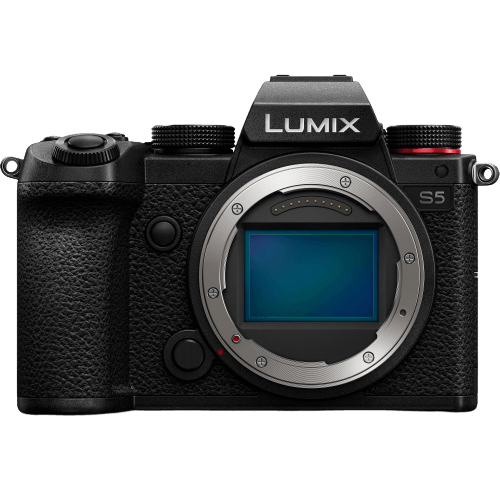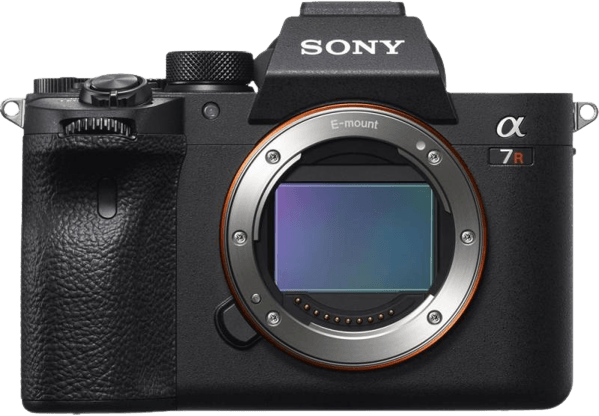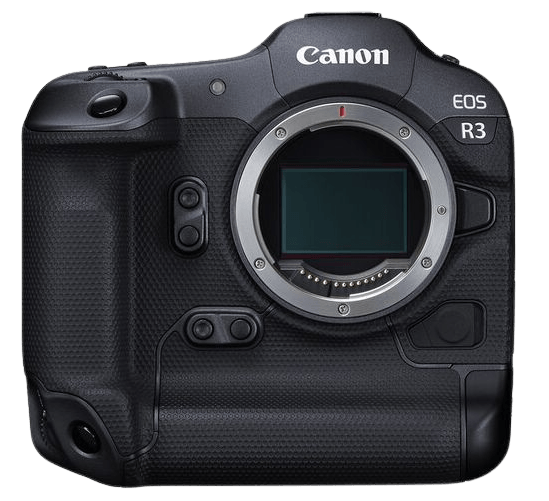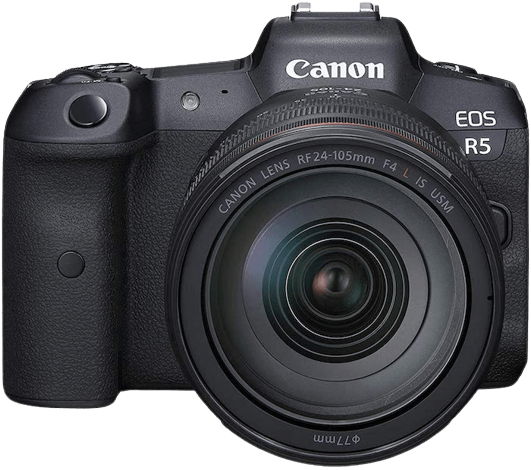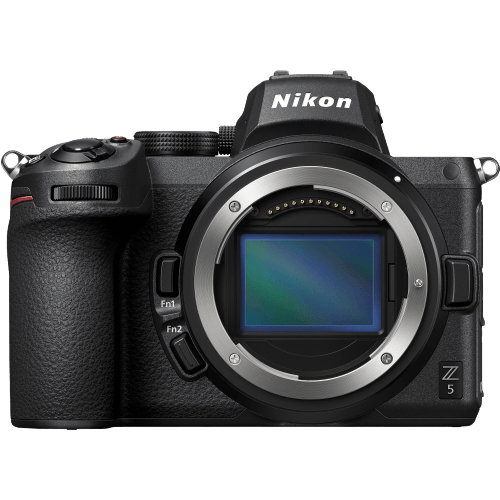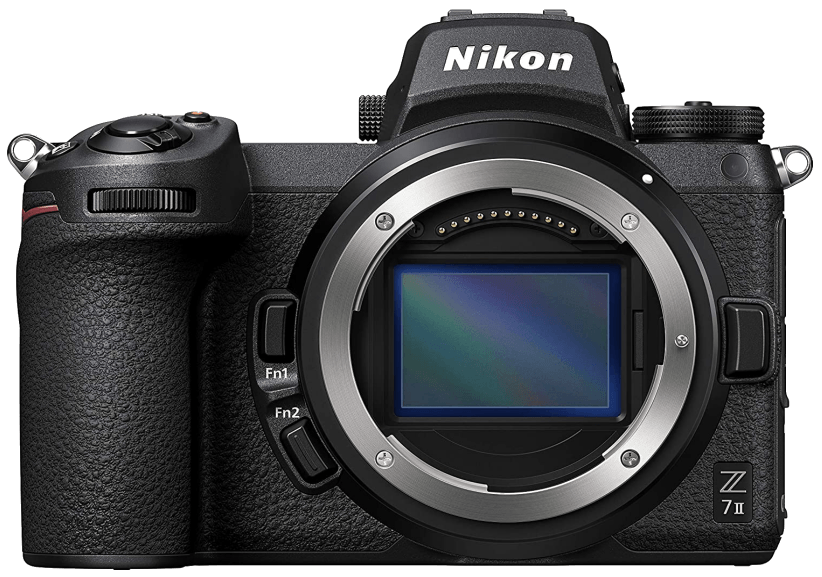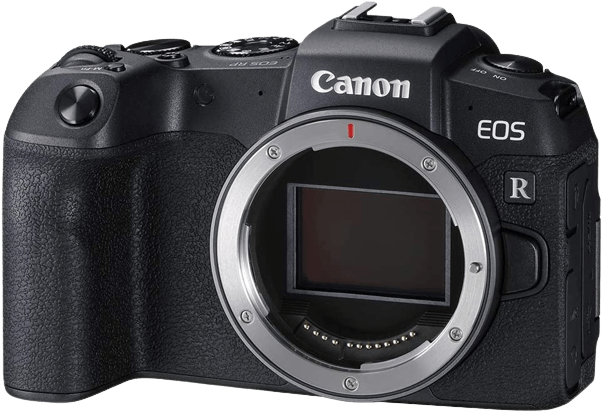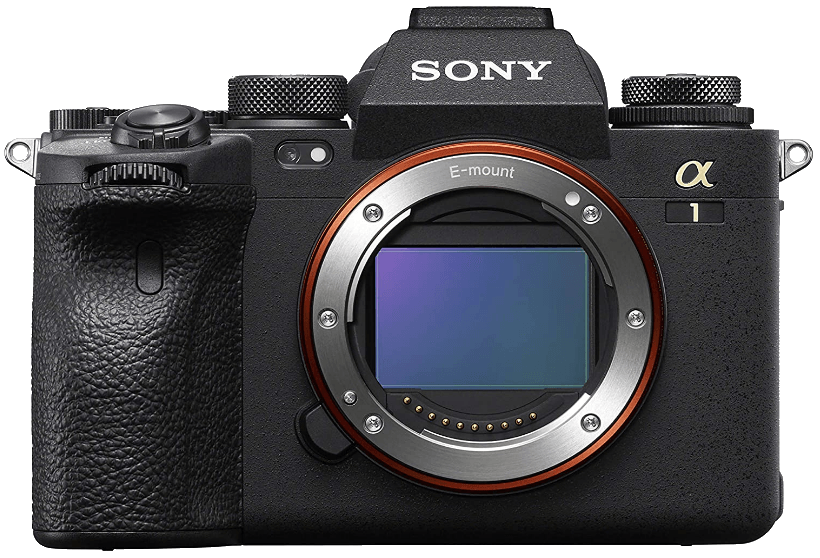Our top recommendation for the best full frame mirrorless camera is the Panasonic Lumix DC-S5. It has 4K video, dual memory card slots, and image stabilization at a remarkable price. [Note: ExpertPhotography is supported by readers. Product links on ExpertPhotography are referral links. If you use one of these and buy something, we make a little bit of money. Need more info? See how it all works here.]
Which is the Best Full Frame Mirrorless Camera?
We cover cameras at a wide range of prices. So there’s something for everyone. Before we look in detail at the best full frame mirrorless cameras, here’s a table of our top picks. So, starting with our top pick, let’s look more closely at the cameras we recommend. The Panasonic Lumix S5 isn’t the cheapest full frame mirrorless camera. But it is also a long, long way off from being the most expensive. As such, it hits a nice balance of quality, features, and affordability. It is particularly good for those who want to major in video work with still photography as a secondary pursuit. This isn’t surprising given Panasonic’s strong reputation in consumer video. There are many things that the Lumix S5 gets right. It has an attractive and weather-sealed body to cope with harsh conditions. Its 24.2 MP sensor delivers great image quality in both RAW and JPEG. The latter is particularly impressive at higher ISOs, where the Lumix is among the strongest in the class. If the 24.2 megapixels aren’t enough for you, the Lumix S5 has a High-Resolution Mode. This combines four images into one 96 MP high-resolution image. It does this by shifting the sensor a tiny amount between the four exposures. It’s very effective at producing extremely sharp, detailed images. For video shooters, the uncropped 4K video is a definite plus. And the fully articulating screen is a must for vloggers and YouTubers who have to be the talent and the camera operator. Its compact size and light weight (for a full frame camera) are also a boon for vloggers and videographers on the go. Serious video fans will appreciate the range of codecs available and support for anamorphic shooting. It’s not the best choice if you are into sports still photography, as the 7 fps is a little on the slow side for fast action. And the range of available lenses in Leica’s L-mount is more limited than other options. But it’s a solid choice with fast and reliable autofocus and excellent video and audio options. Autofocus uses Panasonic’s Depth-from-Defocus technology combined with contrast detection for generally excellent results. Well-thought-out controls and good ergonomics add to the overall sense of a quality camera at an affordable price. This Sony a7R IV has a makes-you-look-twice full frame sensor size of 61.2 MP. That’s an amazing amount of detail available. And like the Lumix above, you can also use a sensor-shift scan to produce 241 MP images. While we’re talking about big numbers, the Sony boasts 567 focus points for its phase-detect AF system. It works extremely well, with face and eye tracking (which can be set for animal or human subjects). The phase detection is backed up with 425 contrast detection AF points and works down to -3 EV (that’s so dark that you need a 60-second exposure at f/2.8 100 ISO). Fifteen stops of dynamic range cope well with challenging lighting conditions. And the in-body image stabilization gives up to 5.5 stops of improvement. Extended ISO values also range up to 102,400, so the a7R IV has you covered in all sorts of tricky exposure situations. There are both electronic and mechanical shutters, and both have a maximum speed of 1/8000th of a second. The maximum frame rate of 10 fps is accompanied by a buffer of up to 68 RAW images. Some people find the menu system on many Sony cameras to be fiddly and not intuitive, and that is the case here as well. It can lead to frustration, which is not ideal with such an expensive and high-spec camera. If you can live with those little bothers, then you have a camera that will deliver incredibly detailed images with reliable accuracy. It is ideally suited to studio photographers who need to produce gallery-size prints regularly. Read our full review of the Sony a7R IV here. There are two game-changing features with the Canon EOS R3 that affect the way it interacts with the user. First is the eye-control focus. Where you look, the camera focuses. I can tell you that this was surprisingly useful on an EOS 50E with its three focus points. The R3 has 1,053 AF points and they cover pretty much the whole sensor. So when you look at the thing you want to photograph, it is automatically selected. The second is the control sensors in the AF buttons. These are similar to the familiar joysticks on other EOS cameras, but here they are just a surface over which you glide your thumb. Like your smartphone screen, this is translated into movement for menu item selection. It is another leap forward for machine-human interfaces. Other highlights include the rugged pro-level design you expect from a Canon camera of this price bracket. The ergonomics are excellent and will be largely familiar to existing Canon DSLR users. With certain Canon lenses, there are up to 8 stops of IS, and you can shoot at a blistering 30 fps even in RAW. Even that is exceeded by a “custom high-speed continuous” shooting mode. This rattles away at up to 195 (195!) frames per second as long as the exposure remains the same. There’s 4K video available crop-free and excellent low-light performance too. The price is, of course, as eye-watering as the drive speed. But this is a serious camera for demanding professionals who need a very particular specification set. And the range of EF-mount lenses available just keeps getting better and better. The Canon EOS R5 is considerably cheaper than its big sibling. But it still packs an awful lot of quality, including a 45 MP sensor, 20 fps shooting mode, and 8K video. The autofocus boasts the same 1,053 AF points, and when using the rear screen, you can select your focus point by touch. The AF covers the whole image, making framing much easier. The quality of the images is superb. The 5-axis sensor-shift image stabilization gives you up to 5 stops of extra exposure latitude. This increases to 8 stops if used with IS-equipped RF lenses. As you would expect, there are two card slots and a rugged weather-sealed body. To keep dust off the sensor, the camera can be set to automatically close the shutter on power-down. This is helpful when changing lenses, as sensor cleaning is an expensive, time-consuming, and specialized job. Great connectivity has audio input and output jacks, Bluetooth, Wi-Fi, and NFC. It also has the less common but often useful Ethernet port. Flash won’t work with the electronic shutter, but it will work at up to 12 fps with the mechanical one. Perfect for busy pros looking for just the right shot in tricky and demanding conditions. And as with all RF-mount cameras, you have access to a growing selection of dedicated lenses. You can also use EF-mount lenses with the aid of a reasonably cheap Canon adapter. Read our full review of the Canon EOS R5 here. The Nikon Z5 is one of the cheapest full frame mirrorless cameras you can buy. And it’s great value for money. There’s nothing budgeted about its 24 MP sensor or the 273 focus points. The image quality is excellent, as you would expect from a Nikon sensor. Also impressive are the weather-sealed body and dual memory slots. Both are indicative of a high-quality camera. The in-body image stabilization is good for up to 5 stops of extra exposure, which is another benefit of this model. The autofocus covers the whole sensor area, which is another extremely useful feature. And it’s generally very quick and reliable. It can be a little slow in very low light, and users have reported that the electronic viewfinder (EVF) loses clarity in poor light. The actual image quality in low light is very good with little deterioration even up to ISO 25,600. The continuous shooting speed of 4.5 fps is a little pedestrian compared with more expensive models. But this camera delivers great images across a whole range of lighting conditions. The range of Z-mount lenses increases constantly, and a whole host of other lenses can be made to fit with varying degrees of success. It’s worth researching! This Nikon Z7 II mirrorless camera has a much more impressive list of specifications. The most noticeable headline figure is the 45.75 MP sensor size. And it doesn’t disappoint in terms of quality either. Some people consider Nikon’s color rendition to be the most pleasing of all the major manufacturers. The Z7 II will please those people (and almost everyone else too). That performance is even acceptable at ISOs up to 102,400. It is somewhat noisy and you wouldn’t want to default to it. But in a pinch, it is usable. Continuous shooting maxes out at a respectable 10 fps, and 4K video is available. Nikon still doesn’t embrace fully articulating screens on their top cameras, and the Z7 II is the same. Although you can see the image from the lens side if you are vlogging or otherwise in need of a selfie mode, it is not nearly as flexible a solution as what Canon uses. As with its cheaper sibling, lens availability is always improving. This includes older F-mount lenses and even some older rangefinder lenses. This is a very capable, impressive camera for those with the budget for it. The Canon EOS RP is a very enticing entry-level camera if you’re looking for a full frame camera. It has excellent specs for the price. The 26 MP full frame sensor produces sharp images good enough for almost any circumstances. It is notable for being very compact and lightweight—not just compared to DSLRs, but compared to full frame mirrorless cameras too. Autofocus is quick and accurate. It has 4,479 AF points that cover the entire image, giving you edge-to-edge AF. This also applies to its effective face-tracking mode. So your subject can’t escape the reach of the autofocus system, no matter where they go in the frame. When using the electronic viewfinder, the right-hand side of the touchscreen is enabled as a selection tool. So your right thumb can quickly and easily guide the AF selection point. One advantage of an electronic viewfinder (EVF) is that you can see the effect of things like shooting mode as you take the photo. Canon’s implementation of this in the EOS RP is done very smoothly, and the EVF allows you to magnify the image to make sure the focus is spot-on. One very useful feature of such an entry-level full frame camera is Canon’s autofocus bracketing. In short, the camera takes a series of bracketed photos, changing the focus point for each one. This provides a depth of field that used to only be available with an expensive tilt-shift lens. It’s a boon for product photography or exceptionally detailed landscape work. You need the (free) Canon software to do the compositing, a tripod, and a non-moving subject. But the results are remarkable. Of course, there are some features that aren’t here. There’s only one memory card slot, and the continuous shooting speed of 5 fps is relatively slow. You get 4K video, but only from a 16:9 cropped image, using the full frame width. And there is no in-body stabilization. ISO is relatively modest at 40,000. But although it produces noise at that level, the images are still usable in most circumstances. Even if pushed to 102,000, you can get acceptable results. All in all, the ESO RP is a great little camera for the money. We have a full review of it which you can read here if you want to learn more. The Sony a1 is their flagship full frame mirrorless camera, and it comes with some eye-catching specifications. You can shoot at 30 fps, and each of those frames captures a 50.1 MP image. Video quality is amazing and tops out at 8K, which you can shoot at 30p, or 120p for 4K video. There are 759 phase-detection AF points and 425 contrast detection ones. They cover 92% of the image. Flash sync speed is an impressive 1/400th of a second. The EVF is one of the Sony a1’s highlights. It has 9.4 million dots, and the OLED has automatic brightness control. It makes shooting with the viewfinder a positive experience. Conversely, the rear screen is relatively small at less than 3 inches. The Sony a1 is likely to appeal to you if you want to major in video work. The 8K capability is a strong selling point, and the AF works superbly in video mode. This should be no surprise as Sony has a great pedigree when it comes to video work. This also shows in the available accessories that enable you to make a very flexible video rig suitable for most filming situations. Ergonomically, some people find the Sony a1 to be uncomfortable in the hand. And it lacks well-placed function buttons. Most high-end cameras have customizable buttons that fall to your hand in the front of the camera near the lens mount. But not on the a1. There’s no doubting the exceptional quality of the images this camera produces. If you are a Sony user and have E-mount lenses already, this could easily be the upgrade you want to improve your output.
What to Look for In a Full Frame Mirrorless Camera
The question used to be between choosing a DSLR or mirrorless cameras. Although that is still a pertinent question, the answer (especially for full frame cameras) is not as clear as it used to be. As you can see from the featured cameras, mirrorless cameras are now up there with DSLRs for quality and usability. In many ways, the selection criteria are the same as for buying a full frame DSLR. The things to consider are:
Lens mount Continuous shooting speed Video capability Advanced features, such as weather sealing, dual card slots, audio jacks
How important these are to you will determine your choice. Also, your current camera will probably influence you. If you own a Canon DSLR for instance, an EOS mirrorless will feel very familiar and intuitive. You will also be able to use your current EF lenses, thus making the initial outlay less scary. The same is true for Sony and Nikon. Then it is a balance of your needs and wants, and finding the best full frame mirrorless camera for you.
Conclusion
As an entry-level full frame mirrorless camera, you can’t go wrong with the Canon EOS RP or the Nikon Z5. They both offer tremendous value for money. If you need a more robust workhorse, then either the Nikon Z7 II or Canon EOS R5 will serve you well. If you’re looking for the best balance between features and price, we think that the specifications of this Panasonic Lumix are unmatched at the price.
